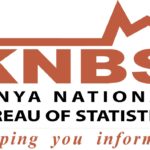The new human resources solutions requires a new mindset and a set of technological skills. The priorities are both digital and human.
Human resource leaders are now more concerned with people having a good work experience because of this tendency to companies to implement their values and culture, thus recruiting and retaining the best talent.
1 – Give employees the possibility to choose
Most workplaces are designed to encourage extroverts, but introverts are also talented people with a very different set of characteristics. Companies should then ask, “How can we accommodate both introverts and extroverts in our workspaces?”
Steelcase’s survey of a global sample of 12,480 employees from 17 countries documents that workers who have a say on where and how they work and are free to choose a workspace are 88% more focused.
Employees should choose where they want to work based on the activity they are developing. Increasingly, the work space is not just a building but part of the human resources agenda to broaden the company culture and engage employees.
2 – Apply consumer marketing tools
In the new trends of human resources, employees can classify the culture and management of a company as they classify that of a hotel, restaurant or movie. HR departments are applying consumer marketing tools to gather the opinions of employees.
3 – Innovative apps can help HR departments
The YouBelong @ Cisco app, for example, helps new employees move around in the first few weeks on Cisco. Staff ask Alex for help – his or her smart personal compass – a voice-over app that offers quick, personalized information on a range of HR topics such as holiday policy, expense reports, and health-related issues.
4 – Use an agile approach to recruit employees
The agile approach is usually used in software development to operate with speed and manage unpredictability. This form of action is being adapted to the area of human resources so that recruiters can discover new talent in much less time.
The scrum is one such approach and is based on an interactive and empirical strategy that seeks to execute, err, learn, and improve each cycle.
5 – Pilot Chatbots in HR
The artificial intelligence is becoming a huge market. Some say it resembles the Internet in the mid-1990s and will be built with all kinds of products and services.
Marketers are already using robots – or artificial intelligence computer programs designed to simulate conversation through written or spoken text – to provide personalized online conversation experiences.
In the field of human resources, there is a great interest in chatbots with the creation of digital work colleagues, that is, a piece of software that works alongside you in your work and participates in the day-to-day activities of your company as a active member of the team.
6 – Plan for a mixed work force
The workforce of the future will not be full-time employees. On the contrary, it will be mixed, or of full-time employees as well as consultants, freelancers, part-time employees and other employees of the company, known as economy workers Gig.
HR leaders looking to the future must now act to plan a mixed workforce and address such issues as: how are gig workers integrated into the company culture or what types of training will be accessible to these workers?
7 – Develop career mobility options
Millennials want digital experiences in both their personal and professional lives. The career mobility platforms allow employees to test new functions and expand their skills while retaining their current jobs in the company.
The prediction of the workplace of the future was conducted among 2,147 global HR heads and shows how companies are creating new platforms for employees to try out new jobs. HR leaders believe there can be increases in employee engagement (49%), improved employee productivity (39%), and improved teamwork (39%).
8 – Investing in employee well-being
Companies are making deliberate attempts to create a holistic view of well-being, from financial well-being to health and comfort. Chris Pulse, CEO of Virgin Pulse, says wellness programs are taking advantage of the Internet of Things (IoT) and incorporating artificial intelligence.
Artificial Intelligence tools like Amazon’s Alexa, which uses Bluetooth, let users know how their health and fitness goals are without using a mobile phone or a web browser.














